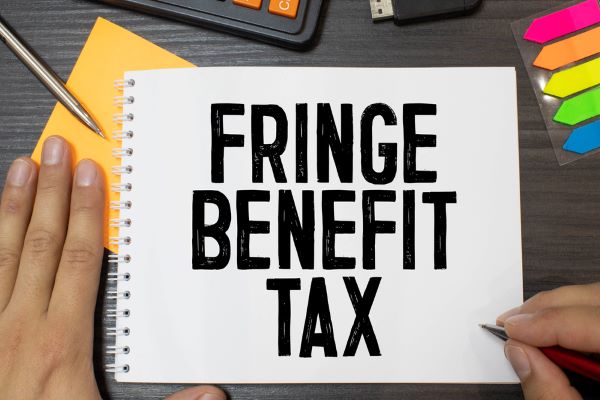What’s new for FBT in 2021
It was just over 12 months ago on 16th March 2020 that the State of Victoria first declared a State of Emergency in response to the COVID-19 pandemic. Much like everything else over the last 12 months, FBT has been impacted in unique ways by the COVID-19 pandemic. This means there have been a number of significant developments for the 2021 and 2022 FBT years.
Given the design and administration of FBT itself, this means these changes potentially impact all employers. For this article we are focussing on the impact on car fringe benefits.

Motor vehicle usage
The most significant development for the 2021 and 2022 FBT years will be car fringe benefits, particularly for people in Victoria who were subject to extended periods of lockdown and restriction on movement.
Car fringe benefits are calculated using either the:
- Statutory formula method – the taxable value is a set formula based on the car’s cost price
- Operating cost method – the taxable value is based on the running costs of the car, reduced by any business use.
Generally speaking, if you are using the statutory method to calculate FBT on car usage and not relying on logbooks and odometer readings, then the changes do not apply to you. The statutory method is largely unchanged year to year.
However, the ATO has provided the following guidance in relation to cars using the operating cost method that rely on logbooks and odometer records.
Home garaged car not being driven
Typically a car is taken to be available for employee use if it is garaged at their house and they have access to it, even if it is not being driven.
However, if a car has not been driven at all during the period it was garaged at home, or only driven briefly for the purpose of maintaining the car, then the ATO accepts that you don’t hold the car for the purpose of providing a fringe benefit. You need to keep odometer records to show that during the period it was garaged it has not been driven, or only driven briefly for maintenance.
This opens the possibility for employers to better manage their FBT position using the operating cost method where log book records are in place.
Car has an existing logbook and COVID-19 has impacted driving patterns
You can still rely on the old logbook despite a change in driving patterns, but you need to keep odometer records for the year to show how much the car was being driven, including during any lockdown periods.
Otherwise you can make a reasonable estimate of the business percentage for the year, taking into account logbooks, odometer readings and any change in pattern of business use during the year.
You could also choose to keep a new logbook just for 2022, even if the old logbook has not expired, to provide a more accurate record for the business use of the car.
First time using a logbook or it is a new logbook year
Where it’s your first time using the operating cost method or you are updating your old logbook, you must:
- keep a logbook recording details of business journeys undertaken in the car for a continuous period of at least 12 weeks (the logbook period must also be recorded in the logbook)
- keep odometer records of the total kilometres travelled in the logbook period, and the total kilometres travelled during the year, and
- estimate the number of kilometres travelled on business journeys during the FBT year.
For this estimate, you must consider all relevant matters including logbook and odometer records, any other records, and any variations in the pattern of business use throughout the year. If the car was not driven for a period due to COVID-19 impacts, it is recommended that you also keep odometer records to show this.
In order for us to determine the best outcome for any car fringe benefit, we generally recommend you or your employee maintains a logbook.
If COVID-19 impacted driving patterns during the period of keeping a logbook
If you were in the middle of maintaining a 12 week logbook and driving patterns were impacted by COVID-19, then you can make a reasonable estimate of the business percentage for the year using the current logbook as a record to account for the change in driving patterns from COVID-19. Keep in mind, the purpose of a logbook is to support a reasonable estimate of your business use across the FBT year.
However, you must ensure that this logbook records a period of at least 12 weeks – if the logbook does not reflect a 12-week period you cannot use it to reduce the taxable value of your benefit for the business use indicated.
Where a car was garaged at the employer’s premises
If a car was returned to your employer or garaged at the employer’s business premises for part of the FBT year, then that the car is no longer considered available for the employee’s private use. No car fringe benefit will arise for those days. This also applies for any situations where an employee does not have access to the car as a result of COVID-19 restrictions.
Where a work car was garaged at your employees’ home
In the reverse circumstance, you may have been garaging work cars at your employees’ homes as a result of COVID-19. The cars would then be available for the employee’s private use and you have incidentally provided a car fringe benefit. In some cases, the use of a car will still be exempt from FBT, but this will depend on: the type of vehicle, how often the car is driven, and the calculation method you choose for car fringe benefits.
The ATO has stated that they will be taking a more active role in compliance enforcement from an FBT perspective. It is therefore important to have confidence in your FBT reporting. If you believe any of these developments may affect you, please contact your Accru advisor for more information.
Should you wish to discuss any of the points above, please contact our Specialists on (03) 9835 8200.
